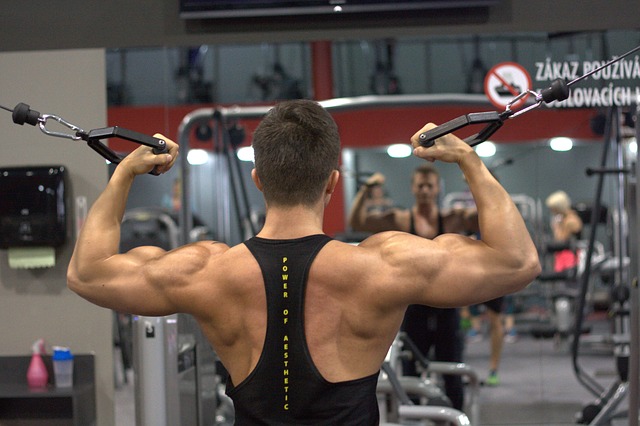As the calendar flips into a fresh year, countless people set goals to transform their lives. Many choose weight loss, new hobbies, or improved mental health, yet few pick a discipline that blends cardio, strength, and grace. Rowing, a low‑impact, full‑body workout, offers a compelling path toward a revitalized self. It challenges the body, calms the mind, and can become a habit that carries you through the year with renewed vigor.
Why Rowing? The Science Behind the Stroke
Rowing engages almost every major muscle group: legs push through the footplate, hips and core drive the torso, while shoulders and arms pull the oar. This coordinated effort burns calories, builds endurance, and improves cardiovascular health without stressing joints. According to recent studies, a 45‑minute rowing session can burn between 400 and 600 calories, depending on intensity. For those seeking a full‑body workout that is gentle on knees and hips, rowing stands out.
- Low impact: The sliding seat allows for a smooth, fluid motion, reducing strain on the spine and joints.
- Strength and cardio: Each stroke incorporates both anaerobic bursts and aerobic endurance, offering a balanced training stimulus.
- Scalable intensity: From leisurely sessions to power‑driving intervals, rowing adapts to any fitness level.
Setting a Realistic Rowing Resolution
A New Year’s resolution that feels lofty can quickly feel unattainable. Start by defining a clear, measurable goal. For example, aim to row 60 minutes three times per week or target a specific distance, like 5 kilometers, within a month. The SMART framework—Specific, Measurable, Achievable, Relevant, Time‑bound—helps transform vague intentions into actionable steps.
Step‑by‑Step Plan for Your First Month
- **Acquire the right equipment.** If you live near a lake or have a gym membership, a rowing machine or a club membership can kickstart your journey.
- **Learn proper form.** A brief session with a coach or an instructional video ensures you avoid injuries and maximize efficiency.
- **Schedule workouts.** Treat rowing days like any other appointment—put them on your calendar and stick to them.
- **Track progress.** Record distance, time, and perceived effort to see improvements over weeks.
- **Adjust intensity.** As confidence grows, incorporate interval training or longer steady‑state sessions.
Common Challenges and How to Beat Them
Even seasoned athletes face obstacles. Rowing, while rewarding, can present particular hurdles: time constraints, motivation dips, and the learning curve of proper technique. Addressing these challenges early keeps the resolution on track.
“The hardest part is getting up when the alarm rings. Once you’re in motion, the rest falls into place.” — An anonymous rower who turned a yearly commitment into a lifelong habit.
- Time management: Break sessions into two 20‑minute segments if mornings are rushed.
- Technique fatigue: Keep the first week’s focus on form; add intensity later.
- Monotony: Mix indoor rowing with outdoor paddling, or try group classes to keep excitement high.
Tracking Your Progress
Progress visualization fuels motivation. A simple logbook or a spreadsheet can capture key metrics: distance, time, heart rate, and perceived exertion. Look for trends rather than day‑to‑day fluctuations. When you notice a steady increase in distance or a lower average heart rate at the same effort level, celebrate those wins—they signal genuine improvement.
Additionally, take quarterly photos and body measurements. Visual changes often outpace numerical data, reminding you of the tangible benefits of a consistent rowing routine.
Incorporating Rowing Into a Holistic Lifestyle
Rowing complements other healthy habits. Pair it with balanced nutrition—lean proteins, complex carbohydrates, and plenty of vegetables—to fuel performance. Mindfulness practices, such as meditation or deep breathing before sessions, can enhance focus and reduce racing thoughts. Adequate sleep, typically 7–9 hours per night, ensures recovery and keeps energy levels steady.
Success Stories: How Rowing Changed Lives
Many individuals credit rowing for breakthroughs that surpassed their initial expectations.
- Maria, 34: After starting a three‑times‑weekly rowing routine, she lost 12 pounds and reported improved joint mobility and reduced back pain.
- David, 48: A former office worker, David used rowing to regain cardiovascular health and now competes in local 5K races.
- Leila, 27: By integrating rowing with yoga, she achieved a balanced body and found calm during high‑stress periods.
Keeping the Momentum Beyond the First Three Months
Once the novelty fades, sustaining a rowing habit requires intentionality. Set new micro‑goals: increase stroke rate by 5%, add an extra session, or try a new rowing discipline like sculling. Explore community rowing clubs; the social element can provide accountability. Additionally, celebrate milestones—perhaps a personal best time or a distance target—and reward yourself with something meaningful but healthy, such as a massage or a new piece of workout gear.
The Ripple Effect: Rowing’s Impact on Overall Well‑Being
Beyond physical gains, rowing cultivates mental resilience. The rhythmic nature of strokes encourages a meditative state, reducing cortisol levels and enhancing mood. Many rowers report clearer thinking and heightened productivity in their daily lives. Moreover, the discipline required to adhere to a training schedule transfers to other areas, fostering better time management and goal‑setting skills.
Conclusion: Start Your Fresh Me Journey Today
The new year is a blank canvas, and rowing offers a versatile, evidence‑backed medium to paint it with vitality, strength, and clarity. By setting realistic goals, learning proper technique, and integrating rowing into a broader healthy lifestyle, you can turn a fleeting resolution into a lasting transformation. The next time you feel the pull of that extra hour at the gym, consider the oar instead—your future self will thank you for the fresh, empowered version you are rowing toward.


